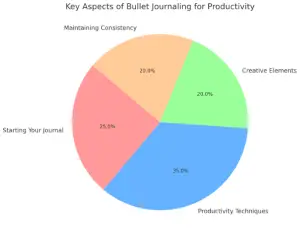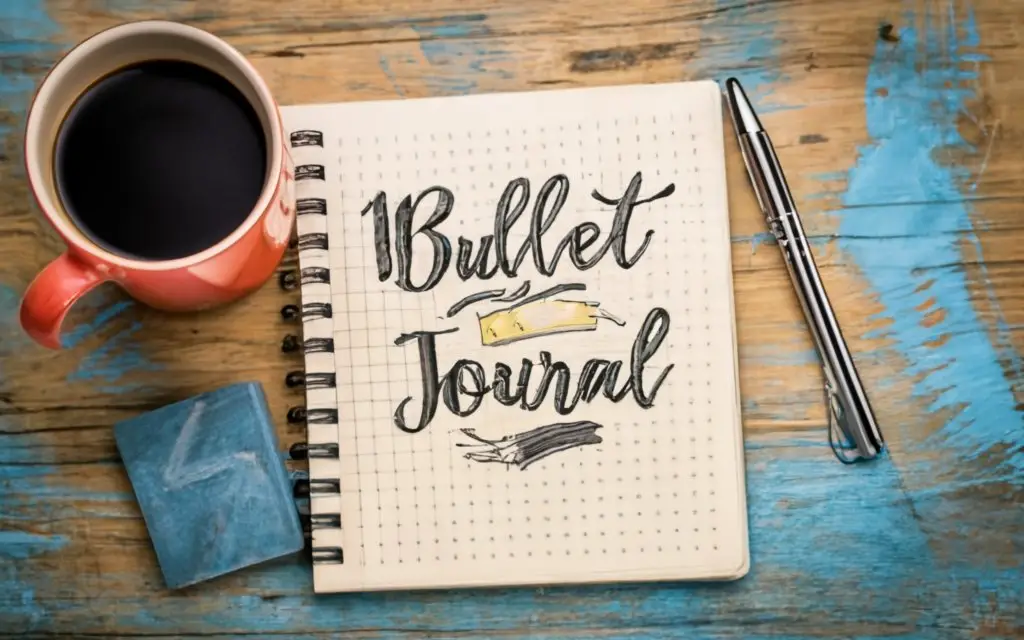A prequel for Maximizing Productivity with Bullet Journaling…Bullet journaling has emerged as a powerful tool for organizing thoughts, tasks, and goals, making it an essential practice for those looking to enhance their productivity. This unique method, which strikes a balance between simplicity and flexibility, caters to various needs, from daily planning to long-term goal setting. In this article, we explore how beginners can dive into the world of bullet journaling and use it as a lever to maximize their productivity.
| 5 Key Takeaways | Description |
|---|---|
| What is Bullet Journaling? | Understanding the basics and its productivity benefits. |
| Starting Your Bullet Journal | Step-by-step guide for setting up your bullet journal. |
| Productivity Techniques | Tips for using bullet journaling to enhance productivity. |
| Creative Elements | Adding creativity to your bullet journal for personalization. |
| Maintaining Consistency | Strategies to keep up with your bullet journaling habit. |
What is Bullet Journaling?
At its core, bullet journaling is a customizable organization system developed by Ryder Carroll. It involves using a notebook to track anything from daily to-dos, monthly calendars, and long-term goals. Its uniqueness lies in its adaptability; it can be as simple or as intricate as you want it to be.
Starting Your Bullet Journal
1. Choose the Right Notebook
The beauty of bullet journaling lies in its flexibility. You can choose any notebook, but consider factors like size, paper quality, and whether you prefer lined, dotted, or blank pages.
2. Understand the Key Components
- Index: The table of contents for your journal.
- Future Log: A space to jot down future appointments and tasks.
- Monthly Log: A monthly calendar and task list.
- Daily Log: Your daily to-dos, events, and notes.
3. Embrace Rapid Logging
Rapid logging is the language of bullet journaling. It consists of short-form notations categorized as tasks, events, and notes. Tasks are marked with a dot, events with a circle, and notes with a dash.
Productivity Techniques for Maximizing Productivity with Bullet Journaling
1. The Migration Technique
Carry over unfinished tasks to the next day or month. It helps you reassess the importance of tasks.
2. The Pomodoro Technique
Pair your bullet journal with time management techniques like the Pomodoro Technique – 25 minutes of focused work followed by a 5-minute break.
3. Goal Setting
Use your bullet journal to break down large goals into manageable tasks. It helps in tracking progress and maintaining focus.

Creative Elements in Your Bullet Journal
1. Personalization
Your bullet journal is a reflection of your personality. Feel free to add colors, sketches, or stickers to make it visually appealing and enjoyable to use.
2. Themed Pages
Create themed pages for different activities or goals. For instance, a fitness tracker, reading list, or mood tracker can add a personalized touch.
3. Washi Tape and Stamps
These are great tools for adding creativity without needing advanced artistic skills. They can be used for borders, section dividers, or just for decoration.
Maintaining Consistency in Bullet Journaling
1. Set Aside Time
Dedicate a specific time each day or week to update your journal. Consistency is key to maintaining an effective bullet journal.
2. Keep It Simple
Starting with overly complex layouts can be overwhelming. Stick to simpler designs initially and evolve your style over time.
3. Reflect and Adapt
Regularly review your journal to see what’s working and what’s not. Your bullet journal should evolve with your changing needs and preferences.
In conclusion, bullet journaling is more than just a trend; it’s a versatile tool for maximizing productivity. Whether you’re a meticulous planner or a creative soul, bullet journaling offers a unique blend of structure and flexibility, helping you stay organized and achieve your goals. Remember, the key to successful bullet journaling is to make it your own and enjoy the process.
